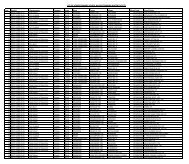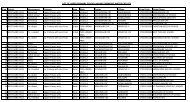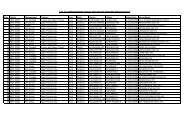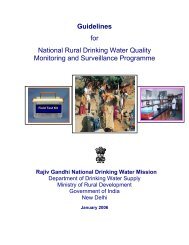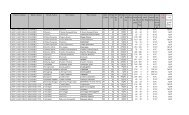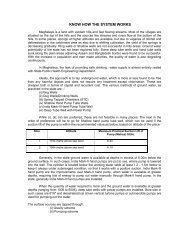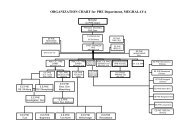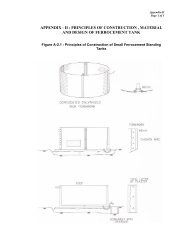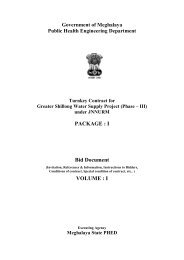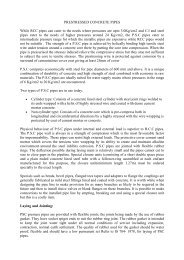PACKAGE : I Bid Document VOLUME : II - Public Health Engineering
PACKAGE : I Bid Document VOLUME : II - Public Health Engineering
PACKAGE : I Bid Document VOLUME : II - Public Health Engineering
You also want an ePaper? Increase the reach of your titles
YUMPU automatically turns print PDFs into web optimized ePapers that Google loves.
11.9 Flanged joints.<br />
Flanged joint should be made by painting the facing of the flange with white lead<br />
freely and bolting up evenly on all sides. A thin fibre of lead wool may be very<br />
useful in making the joints water tight where facing of the pipes is not true.<br />
When packing must be used, it should be of rubber insertion three ply and of<br />
approved thickness. The packing should be of the full diameter of the flange with<br />
proper pipe hold and bolt holes cut out evenly on both the inner and outer edges.<br />
Where the flange is not full faced, the packing may be of diameter of the packing<br />
strip only, proper placing of the packing should be checked before another pipe is<br />
jointed on.<br />
11.10 Disinfection of Mains.<br />
Upon completion of a newly laid main or when repairs to existing pipes are made,<br />
the main shall be disinfected as directed by the Engineer.<br />
The main shall be flushed prior to disinfection except when the tablet method is<br />
used. After initial flushing, the hypochlorite solution shall be applied to the water<br />
main with mechanically or electrically powered chemical feed pump designed for<br />
feeding chlorine solutions. For small applications, the solution may be fed with a<br />
hand pump.<br />
In the case of mains of large diameter, water from the existing distribution system<br />
or other approved source shall be made to flow at a constant measured rate into the<br />
newly laid pipeline. The water shall receive a dose of chlorine also fed at a constant<br />
measured rate. The two rates shall be proportioned so that the concentration in the<br />
water entering the pipeline is maintained at not less than 300 mg/l. The chlorine<br />
shall be applied continuously and for a sufficient period to develop a solid column<br />
of ‘Slug’ of chlorinated water that will, as it passes along the line, expose all<br />
interior surfaces to a concentration of at least 300 mg/l for atleast 3 hours. As the<br />
chlorinated water flows through tees and crosses, related valves and hydrants shall<br />
be operated so as to disinfect the appurtenances.<br />
In the case of newly laid mains in which scrupulous cleanliness has been exercised,<br />
the tablet method can be adopted and in this method, the initial flushing is<br />
dispensed with. The calcium hypo chlorate tablets, are placed in each section of<br />
pipe and also in hydrants, hydrants branches and other appurtenances. The tablets<br />
shall be attached by an adhesive and must be at the top of the main. The main shall<br />
then be filled with water and the water shall remain in the pipe for atleast 24 hours.<br />
GTS : General Technical specification. Page 91



